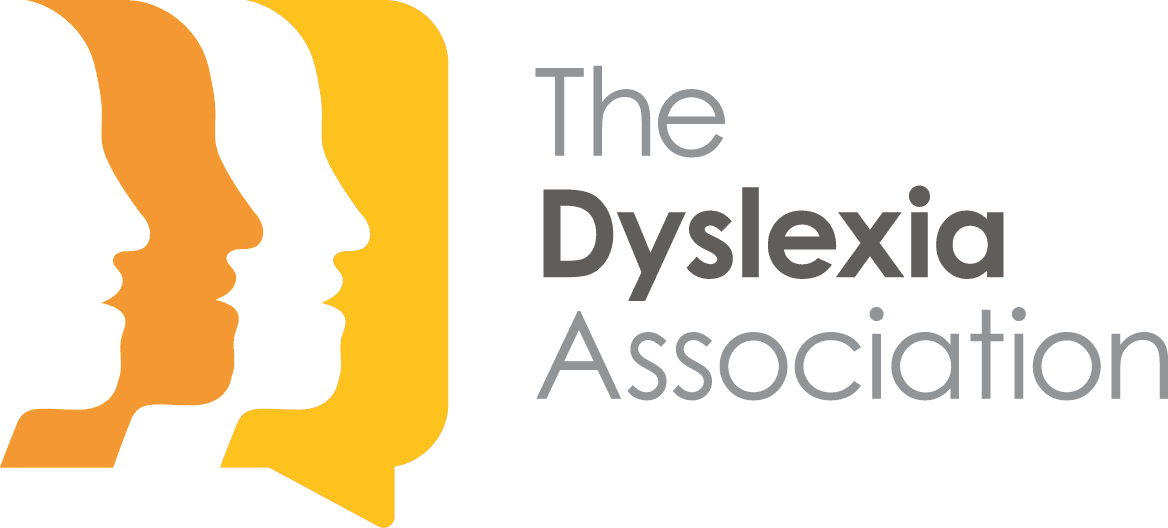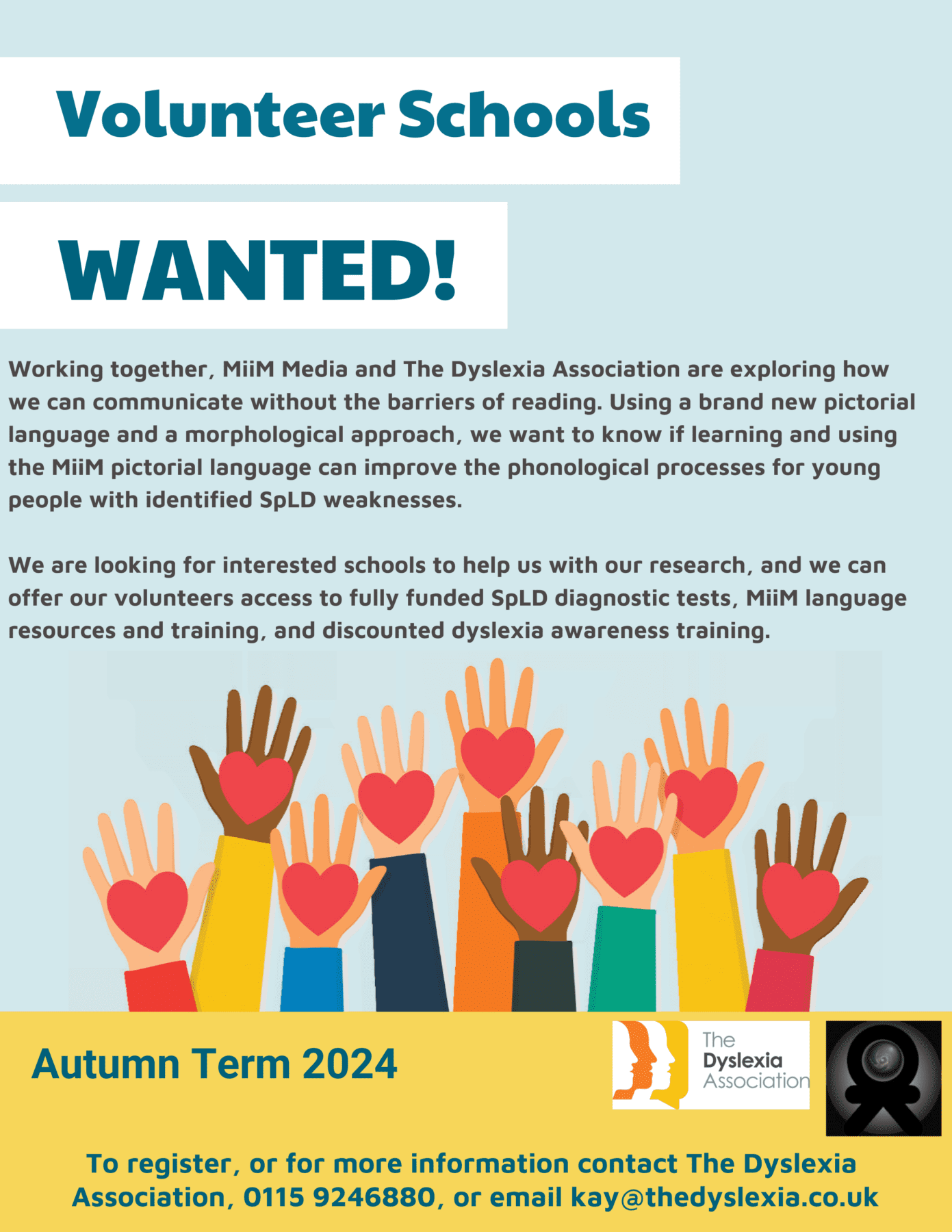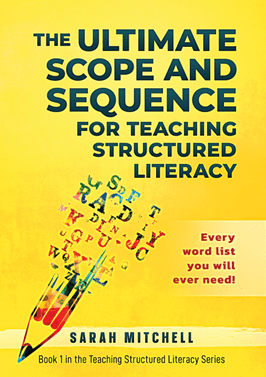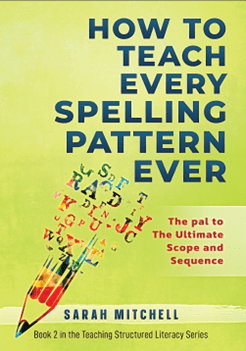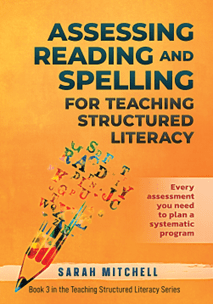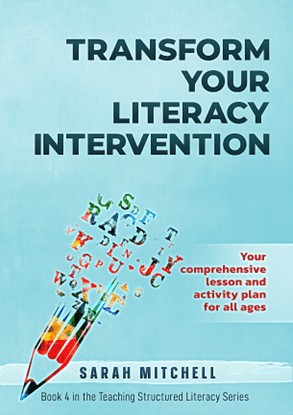Welcome to our community pages
We get a lot of emails and communications from the neurodiverse community, including clever entrepreneurs, creatives, engineers, carers and everyone else out there with brilliant ideas, new products, and just other stuff which you might be interested in. We do update these pages regularly to ensure the information is up to date, so make sure you scroll right to the end.
All published posts are checked, and The Dyslexia Association is not responsible for the content whether this be in a blog, links to other sites, or any other form of user-generated media. All posts, and other information require authors to identify themselves.
Please see our website and external links disclaimer for further information
If you would like something published on these pages, send this in to helpline@thedyslexia.co.uk, with the title: Community Pages
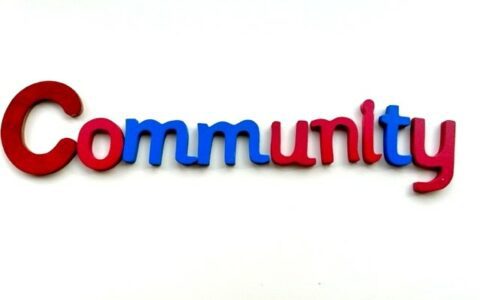
Welcome to our FREE ANND webinar!
ANND are a non-profit coalition of dedicated organisations who are passionate about supporting our community. ANND is the Adult Network: Neurodiversity and Dyslexia and we are comprised of Succeed with Dyslexia, Adult Dyslexia Centre, Yorkshire Rose Dyslexia Association, Hampshire Dyslexia Association, Neurobox and Helen Arkell Dyslexia Charity And The Dyslexia Association.
Our monthly discussions are on hold for the summer break. Please visit us again from September, every last Thursday of the month from 7pm.
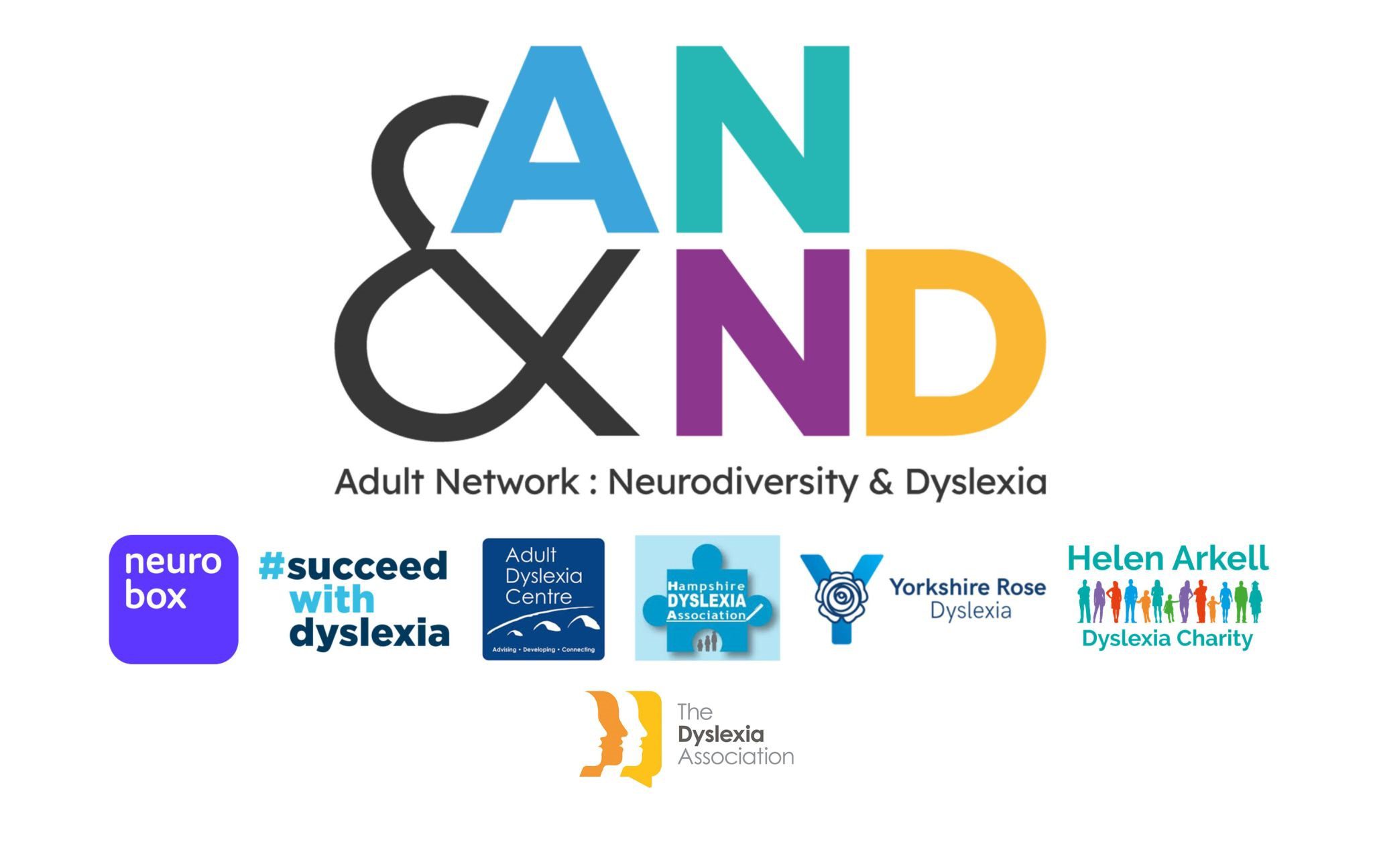
This commentary has been provided by Alex Pagett from Sunbeam Education
Thinking Differently: Potential Strengths of Dyslexia at School
Discussions about dyslexia regularly focus on the challenges it presents, particularly reading, writing, and spelling. There’s no doubt that these are significant and require support. However, focusing only on the challenges misses an important part of the picture. Research suggests that the different way the brain is wired in dyslexia might also lead to some valuable strengths. Understanding these is important when thinking about learning with dyslexia.
A very interesting research summary (Not All Those Who Wander are Lost: Examining the Character Strengths of Dyslexia) has been written on this, and we will include all the research papers used in this article.
Even though we are talking about the strengths that come with dyslexia, it’s important not to generalise. Not every person with dyslexia will have these strengths, and research is ongoing.
- Visual-Spatial Reasoning and 3D Thinking
Some people with dyslexia show improved abilities in understanding and mentally maneuvering shapes. They might be good at visualising objects from different angles or understanding how things fit together.
In School: This could look like talent in geometry, technical drawing, design technology (DT), model building, or understanding diagrams and maps. They might grasp physical concepts in science more readily than others.
The Evidence: Some studies show dyslexic individuals outperform non-dyslexic peers on tasks like reconstructing 3D objects from memory or identifying impossible figures. Research used neuroimaging to show more efficient brain usage patterns for certain visual-spatial tasks. Find more information at Dyslexia and Visuospatial Processing Strengths.
- “Big-Picture” Thinking
Thinking outside the box and building novel ideas are regularly linked with dyslexia. This involves making unusual connections between concepts or working with a ‘big picture’ rather than getting in on the details.
In School: Students might offer new ideas or excel in creative subjects like art or drama, independent of how hard they find writing. They might understand the lesson quickly, especially if explained visually or orally, or enjoy strategic thinking.
The Evidence: There seems to be strengths in divergent thinking (finding unique solutions) and whole idea processing. Some researchers propose that this relates to ‘exploratory’ cognitive styles. See resources like Seeing Dyslexia as a Unique Cognitive Strength and Embracing Dyslexia: My journey and the strengths it brings.
- Narrative Reasoning and Episodic Memory
Some evidence suggests people with dyslexia can be strong at thinking and remembering information in the form of stories or personal experiences (episodic memory), rather than just abstract facts. This can even feel uncanny as they remember some things with incredible detail.
In School: This might mean that students with dyslexia have excellent recall for events, field trips, or audio stories. They might learn history well when presented as a narrative. This type of memory can be used as a learning strategy.
The Evidence: Some researchers and groups like Dyslexic Advantage highlight this ability to think and remember in terms of experiences or mental scenes. Some reports suggest this type of memory helps connect ideas and build understanding of the bigger picture (University of Michigan’s Dyslexia Help). However, research is complex, and other studies mention that there are challenges with certain memory tasks. Many people with dyslexia rely more on this type of learning even if other types of memory recall are harder.
- Empathy
Anecdotal reports and some research suggest individuals with dyslexia can possess strong interpersonal skills and empathy. Those who are navigating their own challenges can form greater sensitivity towards others.
In School: They might be good team players in group projects, act as mediators, or show extra kindness and fairness towards classmates. They may possess strong emotional intelligence.
The Evidence: Enhanced empathy and skills in “reading” people and social situations are often reported.
Conclusion
It’s important to remember, that although there are real challenges to dyslexia, the brain works around these and often excels at other things. A more balanced picture helps with self-confidence. Try learning with these strengths, like project-based learning or storytelling, alongside specific, extra support for school challenges, can make a positive difference.
Focusing only on what’s not working can be upsetting. By acknowledging and building on the potential strengths associated with neurodivergence can help students with dyslexia build confidence and lead to success.
Alex Pagett PhD. is an expert in productivity and coaching students with SEN and has a PhD in Chemistry from the University of Edinburgh. He founded Sunbeam Education, an expert tutoring and coaching company to support students and families with SEN across the UK. Alex had been diagnosed with ADHD and has family with autism.
New Excerpts Every Week
Mick Bean’s Blog is a treasure trove of insights, particularly for those curious about living with dyslexia. Each week, Mick shares fresh stories that bring his unique experiences to life. With his casual tone, Mick invites readers into his world, providing an intimate glimpse into his daily routines and challenges.
It’s a known fact that by the sixth line of any story, you will either stick with it or leave it. I need to draw you in, make this exciting—I have no option but to obey that rule and capture your attention.
And yet, I have a dilemma. I want to be disobedient, to break the rules, yet here I am doing the exact opposite: following them, adhering to structure, just to keep you engaged.
Are you still reading this?
I originally considered writing about disobedient teenagers—vicious louts living on the wrong side of the law, the kind we’ve all encountered. Hoodies pulled up, roaming in gangs, dealing dope,
disregarding authority. I could have written about naughty little boys and girls, spinning a story around their antics and the rebellion they show towards their parents, towards the world they are growing up in.
I could have chosen to write about the elderly—the ones who blame the receptionist at the doctor’ssurgery for a misplaced prescription, only to sit and moan for hours about how the youngsters of today are all disobedient, how things were different when they were young.
At school, my teachers saw me as disobedient.
They told me my English was poor, and that I couldn’t spell—they were right. They said I was useless at maths—they were right. They told me I’d never learn French or understand geography— they were right. But when they told me I was disobedient and “thick,” they were wrong.
At school open days and parents’ evenings, my artwork hung from the classroom walls, covering damp patches and graffiti—a makeshift advertisement for how well the school nurtured the arts.
What a pity those same parents weren’t around to hear the teachers calling me a lost cause, telling me I was a waste of space in the world of academics. They never saw students like me being beaten
with canes for failing spelling tests or struggling with numbers.
This was the late ‘50s and early ‘60s, when dyslexia was barely understood.
Untold psychological damage was inflicted on students like myself by teachers who had no knowledge of the condition. I endured relentless put-downs, bullying, and physical assaults on a daily basis. I remember the dread tightening in my chest whenever I was asked to multiply two numbers, knowing a slap around the ear awaited a wrong answer.
I suffered terrible beatings due to my inability to spell words or use numbers. I remember once being struck across the knuckles with a cane simply because I couldn’t spell the name of my own school.
“You see the word every day boy—how could you not know how to spell it?”
I hid the scars for weeks. I didn’t want my mother or father to see the marks and bombard me with questions I couldn’t answer.
It’s ironic, really—the school was called St Paul’s, housed within a church building. I remember walking past that church one Sunday and spotting one of the teachers, a man who regularly dished
out beatings, strolling beside the vicar. I wondered then if God had forgiven his sins. I was too young to understand the meaning of a hypocrite, but I knew enough to think that a church was no
place for a man like him.
How I would love to return to that school, find my old teachers, take them by the collar and shake the hell out of them. But I take great satisfaction in knowing they are all dead and gone. Rest in
peace, you b******s!
The disobedience I was accused of in school was nothing more than my condition—my inability to comprehend what was being asked of me. The simplest requests from a teacher were met with a blank stare; I hadn’t yet learned how to cope with the towering adult bullies who ruled my world.
My only option was to retreat into my shell, hoping for the best. I remained trapped there throughout my teenage years.
If I was lucky, I would be ignored. Second-best was a verbal onslaught. Worst of all, a physicalattack. In those days, talking in the classroom was not tolerated. My friends and I suffered our
punishments in silence. Oh yes, I know what it was like to be disobedient. If you believed my form tutor, I was one of the most disobedient students in the school.
“He can’t do his spelling, and he can’t do his maths. He simply doesn’t try.”
I spent my school years enduring punishments for crimes I never committed. Most of my friends back then had a disobedient streak about them too.I mixed with my own sort but always knew when to back off when trouble started. For some unknown reason, the group I hung around with accepted me as one of them and never made me feel
like an outcast. All my mates were in higher classes, yet I was never given a hard time or questioned about why I was in the so-called “losers’” class at the bottom of the school. My humour and “street
cred” allowed me to be part of the gang. I kept a safe distance from their slightly iffy activities and their anti-establishment attitudes toward life. I lived on the outskirts of the group but learned the tricks needed to survive those awkward teenage years.
While my mates were undoubtedly disobedient, I was able to learn from them—how to wiggle out of difficult situations and adapt avoidance techniques. I mastered the art of flipping an argument on its head, became verbally adept, and, most importantly, learned to use sarcasm as a defencemechanism against ridicule.
I have always had—and still have—a quick wit with a sharp edge.
I recall working behind a very busy bar serving food and drinks in my twenties. I made a mistake with a customer’s change, and he started shouting abuse, using offensive language: “He can’t add up, what a f*****g joke!” This continued for a while before he sneered, “Well, can’t you talk either?” I simply replied that I had no need to take the mickey out of him, as nature had already done such a wonderful job on my behalf. The whole pub erupted in laughter—a very cutting and sarcastic
remark used to good effect.
Often, people I speak to notice when I’m struggling with something—perhaps failing to remember a phone number or grasping a simple word—and their response can be laced with mockery. But I’ve perfected the ability to cut my audience down using sarcasm. It’s a technique I’ve learned to use to my advantage. Anybody who attempts to ridicule me now comes off second best; no longer do I hide away in the shell that once protected me from the bullying teachers.
Sarcasm is powerful and direct, but I would never wield it as a comedy tool—nobody likes a put down. I use it only when necessary, and it has stopped me from being bullied on many occasions
NEW 28th May 2025
I worked in a special needs school for 16 years and continue to work in education with students who have moderate learning difficulties, including dyslexia.
Disobedient and challenging students are often seen as a problem within the school system, and various strategies are implemented to address these issues. Detention, after-school catch-up lessons, picking up litter, cleaning rubbish bins, or scraping chewing gum off tables and floors have never truly stopped disobedience—and probably never will.
Over the years, I have attended countless meetings, both as a teaching assistant (TA) and in senior teacher discussions, where it has become evident that little to no leeway or consideration is given to dyslexic students when designing strategies to address disruptive behaviour.
Dyslexic students and challenging students are often grouped together, subjected to the same penalties, despite their fundamentally different struggles. Many dyslexic students are wrongly perceived as disobedient and end up falling foul of school rules. While behavioural strategies may work for the majority of students, for those with dyslexia, they can be damaging. Being lumped into the same category as disruptive students and facing the same consequences is clearly unfair.
I worked alongside teachers who had little understanding of dyslexia. While all teachers receive training on the subject, only some apply that knowledge effectively in the classroom—others fall short.
I once overheard someone in the coffee queue requesting a dyslexia test for a student. A nearby teacher responded, “Oh, but she’s in my top set.” No one reacted, but to me, that single remark spoke volumes. How many times has that teacher been told that dyslexia has nothing to do with intellect?
And why did none of the other teachers correct them? The moment passed unnoticed, but it highlighted how dyslexia is still widely regarded as a learning difficulty rather than a learning difference.
Whenever dyslexia is discussed in mainstream conversation, there’s always the obligatory list of famous dyslexic film stars, entrepreneurs, and artists. While I understand the importance of showcasing successful individuals who have learned to navigate their dyslexia—and even use their unique way of thinking to their advantage—it would also be valuable to acknowledge another demographic: the prison population in the United Kingdom.
• 80% of prisoners have poor writing skills.
• 50% struggle with reading.
• 65% have difficulty with numeracy.
• Half of all prisoners read at or below the level expected of an 11-year-old.
Statistics can be interpreted in many ways, but I can’t help but wonder: How many of these prisoners were once schoolchildren whose disobedience was mistaken for anti-social behaviour, when in reality they were struggling with dyslexia
To celebrate Dyslexia month in 2024 we brought you an exclusive short film made by Todd Griffin and Jacob Priddle (with support from The Dyslexia Association) to contribute to the theme of the awareness week of ‘whats your story’.
I am text block. Click edit button to change this text. Lorem ipsum dolor sit amet, consectetur adipiscing elit. Ut elit tellus, luctus nec ullamcorper mattis, pulvinar dapibus leo.
The Nikon Film Festival
The Nikon film festival is a competition, and this year a fantastic short film about a young dyslexic girl (in France) has been entered. The film aims to support all children, past and present, who struggle to find their place in a standardised education system.
Please take a look, it is very thought provoking, and if you have nee touched by Sumaya’s story you might want to vote because the more votes a film recieves the closer it will be to being selected by the jury.
Here is the synopsis
Sumaya dreams of proving that she is much more than her dyslexia. Often mocked by her classmates and underestimated by her teachers, her life is turned upside down when her French teacher, Katie, enters her in a fluency competition, organised by the school to encourage children reading out loud. The film breaks down prejudices and explores dyslexia not as a disability, but as a strength, an energy that can inspire. It’s a story full of hope for children who have to over-adapt every day of their lives.
🌟 Attention Dyslexia Community! 🌟
We’re seeking adults aged 18+ who self-identify as struggling readers or have a formal dyslexia diagnosis to participate in our research study at the University of Surrey.
Your participation will help improve understanding of reading and reading anxiety.
It is a 90-min study with £27 compensation. You can participate at the University of Surrey or from home!
Join us and help shape future tools for improving reading skills and support for those with dyslexia.
👉 Sign up today: https://surreyfahs.eu.qualtrics.com/jfe/form/SV_cY1bFh7aVg9plJQ
If you have questions, feel free to reach out to [email of assigned researcher] ! 💙📚
Have a look at this new book to transform bedtime reading for dyslexic storytellers
Silent Snow is a new book that gives dyslexic parents and storytellers the opportunity to create their stories and turn bedtime reading into a joyful experience.
The book, which is published by Marcia M Publishing, is full of wonderfully detailed and enchanting illustrations from top to bottom guiding allowing neurodivergent storytellers to personalise each story and embark on an adventure with every turn of the page.
Silent Snow’s uniqueness lies in the fact that there are no words on its story pages, unlike like most children’s books, which provides a springboard for imagination.
The brainchild of author Kirsty Heap, a dyslexic storyteller, Silent Snow was borne out of the challenges she faced reading stories to her own children when young. Fuelled by this personal struggle and powered by her imagination Kirsty drew on her dyslexic strengths to find a creative solution when it came to bedroom reading.
On a mission to make bedtime magical for everyone, Kirsty invites readers to join the adventure and let their imaginations run wild, spark their and their little reader’s creativity, and embrace the magic of bedtime tales that knows no boundaries.
Kirsty said: “As I gazed at the cover when I first got the book, memories flooded back to the countless nights spent crafting stories for my children when they were young.
“This book has been born from those special moments, from the magic of imagination that I cherished sharing with them. The illustrations are exactly how I envisioned them and I have pictured storytellers sharing these tales with their little ones, and young children’s eyes lighting up with excitement.”
With Christmas nearing, with Silent Snow due for publication on 1 December, it is destined to be a great stocking filler! Use this link to get your copy https://amzn.eu/d/fB66jpw (Price: £7.99)
Why not create your own snowy adventure and see where your story will take you?
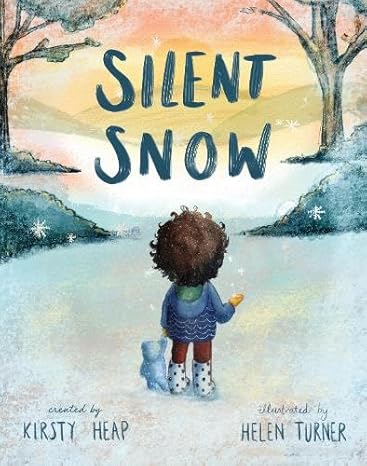
Denise Murdoch from London Metropolitan University is conducting a new research study………………..
I am studying for a postgraduate degree in education at London Metropolitan University.
I am currently conducting a research project and would like to invite you to volunteer. This study aims to explore the lived experiences of dyslexic adults in Black and Brown communities (B&BC). The research intention is to address the existing academic gap in knowledge. I intend to reflect on strategies and experiences of the workplace, increasing my understanding of living with multiple identities: dyslexia and being from a B&BC.
-
Research question:
How do adults with dyslexia from Black and Brown Communities navigate the workplace to achieve success?
-
Aim:
Explore the perceptions and lived experiences of adults with dyslexia from Black and Brown Communities (B&BC) in the workplace, focusing on strategies utilised for their success.
The study has two phases.
- Participants will be able to contribute to both phases, but for phase 2 of the study, you will be invited to opt into the visual journaling.
Phase 1: Face-to-face interviews
- Individuals will take part in a 45-minute semi-structured interview. A 5- 10-minute comfort and movement break will be suggested during the interviews.
- The interviews will be conducted at a convenient time and location or can be remote.
- Participants will be either diagnosed, un-diagnosed or self-diagnosed with dyslexia.
Phase 2: Visual journaling
A workshop will be accompanied by guidance if required.
- Participants will be invited to create a visual journal following a discussion.
- Visual journaling will be completed over two weeks, including thoughts, feelings, reflections, and experiences of your dyslexia, work experiences, participating in this research and how you have succeeded.
- Visual journals – collage or storyboard.
- It is hoped that you will discuss your employment experiences as someone from a Black and Brown background.
All participants will be informed of their right to withdraw from the research during the data collection phase without giving a reason.
However, once the data has been analysed, it cannot be removed from the analysis but will be removed from the database and will not be used for further analysis.
Pseudonyms will be used for each volunteer to protect your identity.
You can contact me at Denise Murdoch: DEM0559@my.londonmet.ac.uk
Please keep the invitation as a reference.
If you have any questions or concerns about the study, don’t hesitate to get in touch with the supervisors at London Met:
Dr Mabel Encinas, by email: m.encinas@londonmet.ac.uk
Dr Damilola Makanju by email: d.makanju@londonmet.ac.uk
New RD2 Research Student Progress Review Accessible March 2024 (9)
Do you like to knit, but need dyslexia friendly knitting patterns? Alice Furness has been in touch to let us know that she has solved your problems….
I publish all my patterns on dyslexic friendly backgrounds as I, myself, am dyslexic. I like to include this to make knitting more inclusive because I believe that knitting and knitwear is for everyone! That’s also one of the reasons you’ll see so many different models in my photos.
I started knitting in 2018 during the summer holidays when I was a primary school teacher, but I got really obsessed after I was in a car crash and lost my job due to injuries. Knitting saved my brain and I hope it can help others too. Because I now have SUNCT and cognitive difficulties, I try to channel that into my patterns; knitting for people like me and people who have other difficulties. I’ll think about which seam will work well for those with sensory needs, I’ll think about what pattern will be best to keep the wind off my face and ears, and I’ll think about what kind of gloves will help me tell left from right. My knitting patterns are my own little corner of the world that help in my fight for inclusivity and how to stay well. I hope they help you to do this too, or that you just enjoy how they look!
As an ex-teacher, I understand how dyslexic and many neurodivergent people learn, which makes it easier for me to teach them during my knitting classes. I try to make these classes as accessible and easy going as I can. If you want to learn to knit with me come and find me in Leek, Staffordshire where we are lucky enough to have 2 wonderful shops full of yarn and chock full of knowledge.
Alice has created a 15% discount code to use for ravelry, until September 18th, the code is DyslexiaAware, use this link https://www.ravelry.com/designers/alice-furness

Created by Leyton O’Day as a passion project to support his partner during her university studies, where she faced the challenge of not having access to assistive software tailored for her dyslexia, Clipboard TTS serves as an invaluable tool empowering you to read, listen, and translate like never before.
Features:
Text-to-speech: Detects when you copy a text or image, and instantly reads it aloud! No more copy-paste!. With support for 49 languages and 100+ voices, you can listen to your text in the language and voice of your choice.
Image-to-text: When you copy an image, Clipboard TTS will automatically detect any text within the image, and convert it to speech.
Highlighting: The current sentence and word being read aloud are visually emphasized with a colour of your choice, making it easy to follow along with the text. This feature is especially helpful for individuals with reading difficulties or those who need additional visual cues while reading.
Overlays: Improves the readability of the text by changing the background colour of the output box. This feature is especially useful for individuals with dyslexia who have difficulty reading text on a white background.
Font Customization: Customizing font type (with support for the OpenDyslexic font!), letter spacing, and size enhances readability and allows readers to personalize the text to their preferences. Previewing the changes provides a helpful representation, enabling users to fine-tune settings for optimal readability.
BoldCue: The first half of each word is made bold, providing clear visual cues that help your eyes quickly jump from one word to the next. This makes it possible to read quicker and with greater comprehension.
Auto Translation: Automatically detects the language of the copied text and translates it to the language of your selected voice. Anything you copy will be instantly translated!
AI Assist: An experimental feature that utilizes artificial intelligence to mutate the copied text based on a custom prompt of your design. e.g., you copy an article paragraph, the AI Assist summarises the paragraph, and the summarised version is read aloud instantly!
Substitutions: Customize the text before it’s read aloud. You can use substitutions to replace certain words or characters with others, such as changing “e.g.” to “for example” or removing a dot to prevent a pause in the audio.
Custom Mutations Order: Many features mutate the output text, such as Auto-Translation, Substitutions, Auto-Dictionary, and AI Assist. When multiple features are active simultaneously, you have the flexibility to tailor the sequence in which they modify the copied text with our “Custom Mutations Order” feature.
See more features here: https://www.clipboardtts.com/product/features
Claim Your Free Trial!
Sign up here: https://www.clipboardtts.com/auth/sign-up
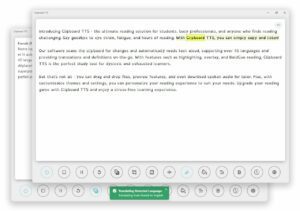
This is Andy Salmon from Sir Linkalot and his new exciting app
Sir Linkalot is an award-winning app for spelling tricky words from ‘was’ to ‘onomatopoeia’ that many dyslexia associations have called groundbreaking.
To find out what it’s all about, take a peek at this clip that contains a ‘celeb warning’ at the end Sir Linkaot – Taster video
The annual subscription from any app store is £50 but there is a 40% discount for members of dyslexia associations.
If you’d like to the most of this offer, send an email to sirlinkalot@sirlinkalot.org, putting in the subject line ‘TDA discount’.
You will be emailed a code that will give the whole household access on any device including laptops and PCs.
It has never been done before to this extent and that’s why it’s getting so much attention.
Your use of mnemonics (links) in this way is a brilliant idea – Ruth Miskin CBE, government advisor and creator of The UK’s leading phonics programme ‘Read Write Inc’
Congratulations on tackling something that no one has managed to tackle. It’s incredible – Susie Dent, Countdown’s resident lexicographer
An utterly brilliant system for creating a world of wonderful happy spellers – Stephen Fry
This is fantastic. I can now spell diarrhoea! – Sir Paul McCartney
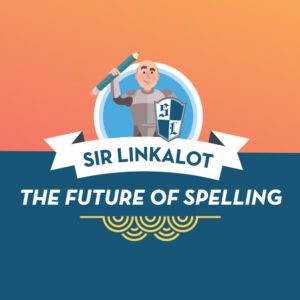

Edward Spencer from Highlightly
🌟 Discover a New Way to Read with Highlightly: Empowering Neurodivergent Readers! 🌟
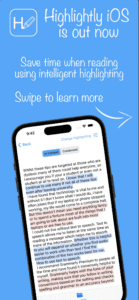
At Highlightly, we believe that reading should be an empowering experience, especially for those who navigate the world through a neurodivergent lens. Our revolutionary approach transforms the reading journey, providing a supportive platform that understands and caters to diverse needs.
📚 The Power of Contextual Highlighting
Unlike traditional methods of rewording or summarizing text, Highlightly brings a fresh perspective to reading. We believe in the strength of context, and our innovative solution highlights key sentences within their contextual framework. This not only eliminates unnecessary details but also empowers you to focus on what truly matters, fostering efficient and effective reading.
👩🎓 Supporting Skim Reading for Students
Skim reading is a vital skill, especially for students navigating through extensive study materials. We recognise the importance of this skill and have designed Highlightly to support this by keeping the surrounding text of highlights available. So you can say goodbye to wading through layers of information; instead, embrace the ability to quickly identify and absorb essential content.
📑 Smart Highlighting Modes for Every Scenario
Highlightly isn’t just a one size fits all summary generator; it’s a versatile reading companion. With multiple smart highlighting modes catering to different scenarios, helping you find the information you need quickly.
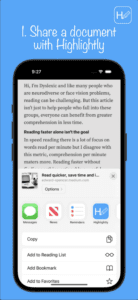
🚀 Born Out of Necessity: A Personal Journey
Highlightly was born out of a personal necessity. As someone who is dyslexic, I couldn’t get through all my university readings. While screen readers offered assistance, they couldn’t be the complete solution. Before Highlightly, the arduous task of listening to entire books became the norm, taking up precious time. Highlightly changes the game by allowing users to skim read just the important new ideas in a document efficiently, saving time and energy.
🌐 Available Anytime, Anywhere: Web and iOS Compatibility
Highlightly is available both on the web and iOS so you can work dome home or on the go on phone or iPad.
🙌 Join the Highlightly Community and 🌈 Experience the Joy of Reading with Highlightly
We are dedicated to enhancing the reading experience for neurodivergent individuals and we hope you find Highlightly as transformative as we do.
We hope that you give Highlightly a go. We are committed to constantly improving the app. If you have ideas, thoughts, or feedback, we would love to hear from you. Your inputs will help us shape the future of Highlightly and reading for everyone in our wonderful community.
🚀 Download Highlightly Today and Revolutionize Your Reading Experience! 🚀
Sarah Mitchell has been in touch with a solution for the frustration of finding the right resources
As a specialist literacy teacher, I’m sure I’m not alone in feeling frustrated and overwhelmed by the lack of resources available especially for older students. I know I certainly felt that way when I completed my Level 5 certificate. Where were the resources that made it easy to explicitly teach phonics, morphology, grammar, and writing skills? The ones I found were often lengthy, outdated, and left too much of the planning to the reader.
I recall feeling like I was stuck in a rut, searching for resources that would provide the structure and guidance I needed to support my students’ learning. But what I found was either too vague or too rigid, leaving me with more questions than answers.
As I began to create my own resources, I knew that I had to make them different. I wanted to create something that would be easy to use, evidence-based, and accessible to all specialist teachers. Something that would provide the clarity and guidance we needed to teach literacy with confidence.
After years of working with students with Specific Learning Difficulties (SpLD), I knew that what they needed was a systematic and sequential approach to learning. An approach that would identify and address their gaps in knowledge, rather than trying to follow a rigid program from start to finish.
**The Teaching Structured Literacy Series**
The result is the Teaching Structured Literacy Series, a set of four books designed to support specialist teachers like you. Each book is carefully crafted to provide clear structure, guidance, and activities that can be tailored to your students’ specific needs.
|
The first book, “The Ultimate Scope and Sequence for Teaching Structured Literacy,” provides a comprehensive framework for teaching literacy, including phonics, morphology, etymology and accurate spelling rules.
**Feedback from Claire Harvey, Head of Education at the Helen Arkell Dyslexia Centre: “A cumulative, sequential, step-by-step approach to teaching literacy underpins all specialist tuition. Checklists to track progress, and word examples for each task. I wish I had this book when I was training!” |
|
The second book, “How to Teach Every Spelling Pattern Ever,” delves into the why behind spelling patterns and words, providing explanations.
Claire says: “Includes not only the WHAT to teach but also the HOW to teach spelling, including explanations for WHY words are spelt as they are. Drawing on morphology, etymology, and phonology, this book delivers a story behind even some of the trickiest letter patterns and words to teach, making them ultimately more accessible, meaningful, and memorable for both the specialist teacher and the learner. This is a super resource for any specialist teacher to have in their toolbox!” |
|
The third book, “Assessing Reading and Spelling: For Teaching Structured Literacy,” offers checklists and assessments to help identify specific areas of difficulty and track progress.
Claire says: “Supports specialist teachers to assess, plan and then deliver personalised literacy targets based on their learner’s specific areas of weakness and gaps.” |
|
And finally, “Transform Your Literacy Intervention” provides practical advice on how to structure lessons with SpLD learners, along with valuable resources and reinforcement activities.
Claire says: “For any specialist teacher looking for support on how to structure their lessons with SpLD learners, this book delivers. It includes a lesson template alongside valuable advice on how to deliver lessons to ensure targets and teaching goals are achieved. There are some super examples of teaching resources and plenty of reinforcement activities and games to ensure learners can practice and embed new skills. Thank you, Sarah, for another super book in your range.” |
**What You’ve Been Waiting For**
I’ve been thrilled to hear from hundreds of specialist teachers who have used my resources and have seen real improvements in their students’ learning. The feedback has been overwhelmingly positive, with many teachers praising the clarity and simplicity of the resources.
As someone who has been in your shoes, I understand the frustration and uncertainty that comes with trying to find the right resources. But I’m confident that my series can help you overcome these challenges and provide the support you need to teach literacy with confidence.
So why not take a look at the Teaching Structured Literacy Series today? With these resources at your fingertips, you’ll be well on your way to transforming your literacy teaching practice and making a real difference in the lives of your students.
Available at the Helen Arkell Dyslexia Centre online bookshop. A portion of the sale goes to the charity.
The Ultimate Scope and Sequence:
https://helenarkell.org.uk/product/ultimate-scope-and-sequence-for-teaching-structured-literacy/
How To Teach Every Spelling Pattern Ever:
https://helenarkell.org.uk/product/how-to-teach-every-spelling-pattern-ever/
Assessing reading and spelling:
https://helenarkell.org.uk/product/assessing-reading-and-spelling-sarah-mitchell/
Transform Your Literacy Intervention:
https://helenarkell.org.uk/product/transform-your-literacy-intervention/
www.helenarkell.org.uk
Alice Sarah Lane is developing a website and needs your help
I am a final-year student at Saint-Maurice College in Switzerland, my family is English and I am dyslexic. As part of my graduation project, I have developed a website offering a dynamic test for dyslexia, designed to be language-independent.
It was only at the age of fifteen that I was diagnosed with dyslexia, as my bilingualism (English-French) led my teachers to attribute my reading and writing difficulties to this and did not consider dyslexia. Thus, I wanted to help others in the same situation by developing this test, based on the work of Elbro C., Daugaard H. T., and Gellert A. S. (2012) “Dyslexia in a second language?—a dynamic test of reading acquisition may provide a fair answer”, Annals of Dyslexia 62:172–185.
To evaluate the effectiveness of this test, I need as many people as possible to complete it, whether they are dyslexic or not, monolingual or multilingual, and of all ages.
For optimal results, it is recommended to take the test in a quiet place with minimal background noise and a good internet connection. The test will take only ten minutes. Chrome, Edge or Safari are the recommended browsers to use. The web address and password required to access the test are given below. You need to have the microphone permissions enabled and allow access when requested. Thank you in advance for your help.
To see these details in a different format use this Language Agnostoc Dyslexia link.
Link: https://language-agnostic-dyslexia.mayanir.ch
Password: I@DbIstr91
My contact email: language.agnostic.dyslexia@gmail.com. Please do let me know if you encounter problems with the test!
Alice Sarah Lane
Join Tina, a mum of a dyslexic child and her blog, a must read for parents who have just discovered their child has a learning difference.
Dyslexic participants needed for research study looking at Dyslexia and Employment with a focus on attitudes towards Dyslexia in the workplace. We would like to hear from people with dyslexia about their workplace observations of employers and line managers in the UK.
If you:
– Are Dyslexic
– 18 plus with a Dyslexia Diagnosis
– Have work experience
– Happy to talk about your working like
Please fill out this online research questionnaire via the link here: https://stir.az1.qualtrics.com/jfe/form/SV_3KrVU7yo5PD0RtY
Disability ? / ability?
Dis / Dys it’s a prefix which denotes lack
Life is full of coincidences and probability and hidden patterns
A 5 and an S look similar if badly transcribed. The source of the error can hard to see is it the transcription or something inside me.
A constant struggle to hide in a world of ableism
The able do not see the ism , cause there preconceived idea is that everyone is like them.
QED
ableism is hidden just as my disability is hidden it does nt show on the surface
I am not neurotypical nor are the people I work with our expressions are different
like those born into a foreign culture we see the world differently
This happened in the womb during our formation at a genetic level our brains processed differently
faster in some regards slower in others
Just different not better or worse
the pathways create new Neuro connections
give us new and different expression
I am on this spectrum of existence grouped with us neurodiverse bunch of whom I am proud to be associated with some of us are non verbal
But what I have learned from my none verb kin is expression does nt have to be limited to language it expressed emotionally , creativity in many tender and human ways
It’s exciting to look at the world though new eyes
Art and the art of living can nt be contained by such limited definitions as able / disable cause where others see lack I see humanity reaching exploring finding new ways of being
In community
In nature
With use of technology
All in creative and diverse ways
Expressing are total selves in totally unique ways
Finding away in a maze not of our making
Making a life
Expressing our spirit
With our wired different brains
I hated my label at school
Labelled thick
But now I embrace it
Viva la difference
Because those who think differently
Add new ways of seeing to the wonderful world in which we live
Check out some more of Rob’s writing using these links:
https://cs.astronomy.com/asy/b/astronomy/archive/2008/12/08/relativity-rap.aspx
https://www.abctales.com/story/valiswaverider/shorthand-conversations
https://www.abctales.com/story/valiswaverider/shoreline-autumn
And, a short story:
Kid.
That you Jack ?
It took me six weeks to gain my sea legs now I was finding it an usual sensation to be back on dry land.
The docks in Liverpool were dull grey and feature less in fact no less feature less than the arctic circle in the middle of winter. I had never known cold like we experienced on those winter coveys.
I held a cigarette to my lips to fight off the cold of a bitter wind at the quayside. The dock was a hive of activity we were loading up for the next voyage but it was long slow work and at present there was no real sense of urgency.
Another ship was docked much further down the side of the quay. They were offloading prisoners off war in handcuffs.
Albert who I was working with started shouting at one of them “ well bugger me , Jack , Jack is that you ?” The prisoner looked over at Albert and smiled a smile of pure joy. “Albert” he responded.
“What the hell are you doing in a Jerry uniform”. The guards did nt seem to mind the two of them chatting. “Well it’s a funny story really I was visiting my uncle in the Black Forest, when the next thing you know war had been declared and they have conscription over their well I could nt very well say no or they d have had me shot , so the next thing you know I am in the German navy”.
I did nt let on I was English or they d have hung me as a spy but all those summers in the black Forrest helping on the farm with Uncle Ernst meant I was a fluent in German , anyway it’s been a nightmare and the ship getting torpedoed was really a blessing in disguise, can you do me a big favour and let the wife know I am still alive may be just keep quiet about the been in German navy part.
Thanks R Wheeldon
Hi there!
My name is Natalie Collins and I am a final year Economics student at the University of Leeds. I am currently completing research for my final year dissertation and I need your help to tackle the misconceptions associated with dyslexia in the workplace. If you’re interested, please take a few minutes to complete the survey today.
Why is this important?
My survey aims to assess the level of understanding that both dyslexic and non-dyslexic employees have regarding the skills strongly associated with dyslexic thinking. The results will highlight the workforce’s current perceptions of dyslexic cognition, which will aid us in suggesting effective interventions and guiding further research. By truly understanding the accurate skills associated with different cognitive variations, we can empower dyslexic employees to thrive in the workplace and enhance the efficiency of our labour force.
Make a difference – your voice matters:
There is no judgment here! Please answer honestly so we can gauge an accurate level of understanding. Every response counts and helps us move closer to a more inclusive and supportive work environment for everyone.
The survey only takes 3 minutes, and your insights could lead to meaningful change.
Your participation is greatly appreciated!
See my poster for further details
.
Joel Stanley has been in touch from Mental Health Innovations joel.stanley@mhiuk.org…………..
Mental Health Innovations is a charity that powers support services The Mix and Shout. We are working with The Motability Foundation to understand how people with disabilities, neurodivergence and mental health conditions experience public transport.
Motability Foundation is a charity dedicated to making all journeys more accessible. To help improve transport support and services, we’d love to hear about your experiences, challenges and ideas.
Take the survey for a chance to win a £25 Love2shop or Amazon voucher. It should only take about 10 minutes to complete.
Safa from Burnley College is looking for participants for her research project, and her dissertation. If you are interested read on, and use the link to find out more information.
I am completing a dissertation on a study exploring age of diagnosis of dyslexia and implications on wellbeing in adulthood and I need participants to be 18+ for ethical reasons. My study has been ethically approved by the University of Bolton and this study will be completely anonymous. There are a number of questions about your experience of diagnosis. This includes either having an early or late dyslexia diagnosis and how this has affected you as a person.
The study will take you 10 to 15 minutes to complete and you will be free to withdraw from this study at any time you wish
Survey link https://forms.gle/AcUAny4pqeJF7D3s5
Alex has written a book about a detective cat who gets their letters mixed up, see below for more information….
Hello
I have written a children’s book (ages 8 – 12) about a cat who is a detective. In order for him to communicate with the pet’s owner he fashions a note from scratching out letters from magazines only he gets the letters b, d, p and q mixed up.
